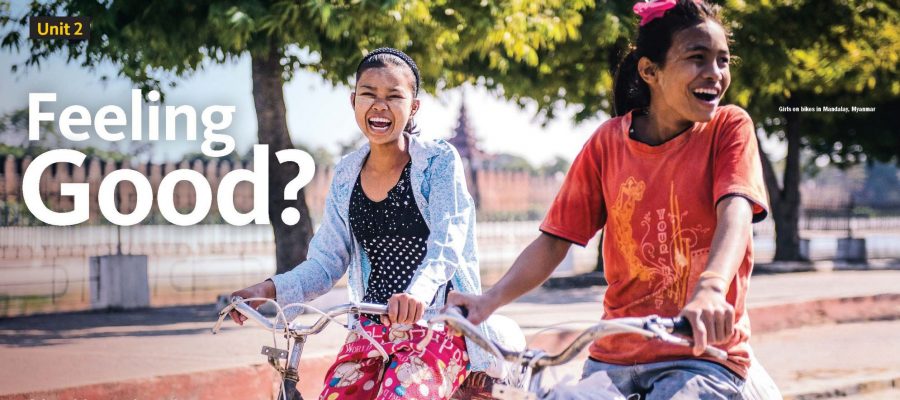Sometimes you can tell that your students are going to doze off as soon as the lesson starts. Sometimes, despite your best efforts, despite making a ‘brilliant beginning,’ you can sense the energy levels start to flag as your lesson progresses. A quick switch, getting your students up and out of the seats and moving around the classroom, will help to reinvigorate them and wake up their brains. But how can we incorporate physical activity in our classroom without losing control of the class? Many teachers, understandably, worry that once students step away from their desks they will lose focus and get distracted. In fact, the opposite is true. Giving your sleepy students a reason to get up and move about will help to keep them engaged and interested.
Before you release the students from their desks, it’s important to make your expectations clear. Is this going to be a very quick, spontaneous three-minute ‘wake up the class’ game, or is it a longer, more structured activity? Will you need to allow time at the end of the activity for quieter reflection or feedback? Have a signal prepared – a hand clap, a sound effect (you can set this up on your phone), a whistle or a bell to indicate when the activity is over.
Let’s look at a classic and much-loved ‘get ‘em moving’ activity: a classroom survey. Classroom surveys are a great way to get students moving around, communicating with each other and staying on topic. However, they require careful preparation. You need to be aware of your own expectations. What do you want to achieve from this activity? Is the focus purely on communication or do you want to incorporate some targeted grammar or vocabulary practice? Students should also have a clear understanding of exactly what is expected of them before they even get up from their seats. Think about these points:
- Do you want to provide the questions for your students, or do you want them to write their own questions? If they write their own questions, give them one or two examples first.
- How are they going to keep a note of their classmates’ answers? It’s a good idea to prepare a blank form for students to complete, for example:
Have you ever met a famous person? Yes/No More details
________________________________ _____ _____________________________
________________________________ _____ _____________________________
________________________________ _____ _____________________________
- How many people will they include in their survey? Set a realistic target.
- How long do you expect the activity to last? Tell students how long they’ve got, and remind them when their deadline is approaching.
- What do you want them to do once they have completed their survey?
This last point is particularly important. If you’re asking them to find out information, then you should also give them an opportunity to process and report on that information. You can incorporate some student choice into the activity by allowing them to decide how they want to present their work. For example, they could produce a written report, an annotated diagram or a presentation. By offering a choice, you are encouraging them to think about their personal preferred ways of working and helping them to discover their own sources of motivation.
The hard work for you as the teacher should all be in the preparation. The better-prepared your students are, the more they understand about exactly what they have to do and how they have to do it; the less you will have to do during the actual survey. Don’t worry if you feel redundant – that’s a good sign! Take the opportunity to watch your students, note down any common vocabulary or grammar errors, and act as a timekeeper.
Now it’s over to you! Have you used any particularly effective classroom surveys in your lessons? Do your students enjoy the opportunity to get out of their seats occasionally? Comment below and share your ideas and thoughts.
Katherine is the author of National Geographic Learning’s Impact for teens. She is also a frequent contributor to the In Focus blog and a webinar presenter. You can view the recordings of Katherine’s webinars The Creative Classroom and Making an Impact: Teaching our Students to be Global Explorers here.
Author: Katherine Stannett
Katherine Stannett is based in West Sussex, England and is an author with over twenty years of experience in editing, writing and developing materials to teach English. She specializes in writing for children and teenagers at all levels and is particularly interested in the development of 21st century skills. She is an author of National Geographic Learning’s Look, a seven-level series for young learners of English, and Impact, a five-level series for teenage learners of English.




I always encouraging the student to think before writing about a Topic,and always tell to complete a short form and original,what they think about?and always encouraging them about mistakes at skills:writing,I say:Dont worry,today 5 mistakes,tomorrow 3,and last week no more,,I think it is a simple way to helping them to discover more,and it,s a good of motivation for me,I practice this way at teaching, German and English, I SAY YOU REALLY: CONGRATULATION FOR THIS PERFECT WORK,NADJOLA GERMAN AND ENGLISH TEACHER, FROM ALBANIA, (ELBASAN CITY)THANK YOU.
Thank you Nadjola. I agree that encouragement and reminding students that they are always making progress is so important.